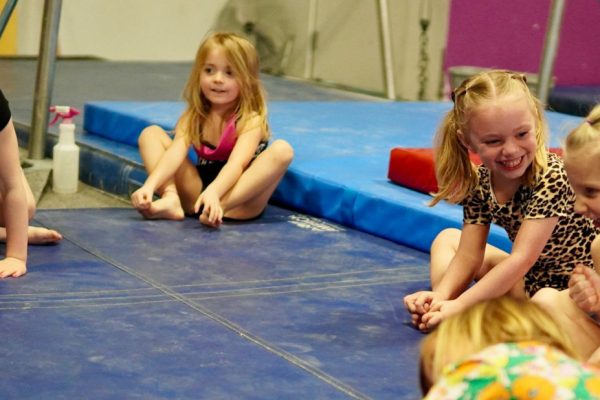
Boo-tifully inclusive: make it a Halloween for all abilities
Halloween is about magic, mystery, and streets filled with laughing kids. But for our kids with disabilities, it means navigating spooky surprises, tricky pathways, and sensory overload. Here’s a guide for ensuring that every child gets in on the Halloween fun — whatever their ability or needs.
Plan accessible routes for trick-or-treating
- Physical disabilities: With some pre-Halloween neighbourhood scouting you can make sure the route is wheelchair-friendly. Stick to houses without stairs or difficult entryways.
- Autism and sensory needs: Trick-or-treating can be exciting but overwhelming! For kids with sensory needs or autism, quieter, less crowded streets or even “VIP trick-or-treat time” on off-hours can make it more enjoyable.
Costumes that work for everyone
- Keep the creepy comfy: Some costumes can be itchy, hot, or restrictive. Choose costumes made from soft, breathable fabrics, especially for children with sensory sensitivities. Some spooky pyjama sets are a hit!
- Adaptive designs: For wheelchair users, costumes that turn their chairs into magical carriages, pirate ships, or even cozy dragons are great for sparking smiles (and lots of high-fives).
- Clear visibility: For children with limited vision, avoid masks or accessories that may further obstruct their view, using face paint instead. Or if your sensory kid hates face paint – just avoid it all together; do whatever works best for your child. There are no rules!
Consider sensory-friendly events
- Look for sensory-friendly Halloween events or trick-or-treating locations.
- If going out is too much, create a Halloween treasure hunt at home, where children can find treats or small toys at their own pace. Add a soundtrack of soft, spooky tunes and glowing jack-o’-lanterns for that cozy Halloween vibe.
Non-verbal communication for trick-or-treating
- Kids who are non-verbal or have speech impairments could use “trick-or-treat” cards. These cards can also include a saying ‘Thank you’ or “Happy Halloween!”
- For AAC (Augmentative and Alternative Communication) device users, program in a few Halloween phrases like “Boo!” or “Trick or Treat!” so they can share the excitement.
Creating inclusive treat baskets
- Not every ghost needs lollies! Stock up on glow sticks, stickers, and little toys. The teal pumpkin project is quite big in the US and you may even find it over here now. Look for houses with teal pumpkins—they’re signaling non-lolly treats for kids with dietary or sensory needs.
- Tricks in treats: Want to add a touch of mystery? Try wrapping non-edible treats in tissue paper and drawing on little ghost faces, adding a fun “unwrapping” activity for all!
Prepare neighbours and friends
- Halloween magic works best when the whole block is on board. Neighbours who know about inclusive trick-or-treating might be more prepared to offer sensory-friendly lighting, provide non-edible treats, or give kids the time they need. Sharing inclusive Halloween tips with your community, especially through local schools, parent groups, or social media, helps build a welcoming environment.
Inclusive, fun decorations
- Go easy on the jump scares – while spooky is fun, Strobe lights, fog machines, or loud noises can be overwhelming. Consider adding decorations that are more friendly than frightening or over the top. Glow-in-the-dark skeletons, grinning pumpkins, and colourful lights work wonders without the surprise factor.
Ways to prepare your child and help them cope
Practice ahead of time
Try on costumes in advance to check for comfort and any sensory issues. Let your child wear their costume for a little while each day leading up to Halloween so they can get used to it.
Practice saying “trick or treat” or using a card or device if they are non-verbal. Role-play Halloween scenarios, like knocking on doors and receiving treats, so they know what to expect.
Visual schedule of events
Create a Visual Map: Use a visual schedule or social story that explains what will happen step-by-step, from getting dressed up to trick-or-treating. Add pictures and familiar words to make it engaging and comforting.
Use timers: Setting timers can be helpful, especially if you’re trick-or-treating. This way, your child knows when an activity will end, preventing surprises.
Sensory-friendly costumes
As mentioned above, comfort Is key. Stick with costumes that are loose, soft, and tag-free. Many kids love wearing Halloween-themed T-shirts or pajamas, which can be a fun alternative to more elaborate costumes.
Avoid overwhelming accessories – masks, hats, or costumes with heavy makeup might be too much. Instead, use face paint sparingly or keep accessories simple and optional.
Have a game plan for trick-or-treating
Start early and go slow: Begin before it gets too dark or crowded. Many sensitive children enjoy trick-or-treating at “off-peak” hours when it’s quieter.
Set clear boundaries before you head out. Set a goal or limit for how many houses you’ll visit, letting your child know they can go home whenever they’re ready. If they’d prefer staying close to home, consider trick-or-treating at a few close neighbours or with familiar friends.
Bring familiar comfort Items
Carry noise-cancelling headphones or sensory toys for quick breaks. For children who get overwhelmed by sounds or crowds, these can be lifesavers.
Let your child carry a familiar item in their treat bag, like a small toy or blanket, to give them a sense of security.
Prepare for sensory overload
Have a code Word or signal: Teach your child a word or gesture they can use if they need a break. Create a safe spot or agree on a plan for breaks if things get too overwhelming.
A time-out bag might help here too – fill a bag with favourite snacks, a water bottle, or fidget toys, so you have a little sensory break kit on hand.






